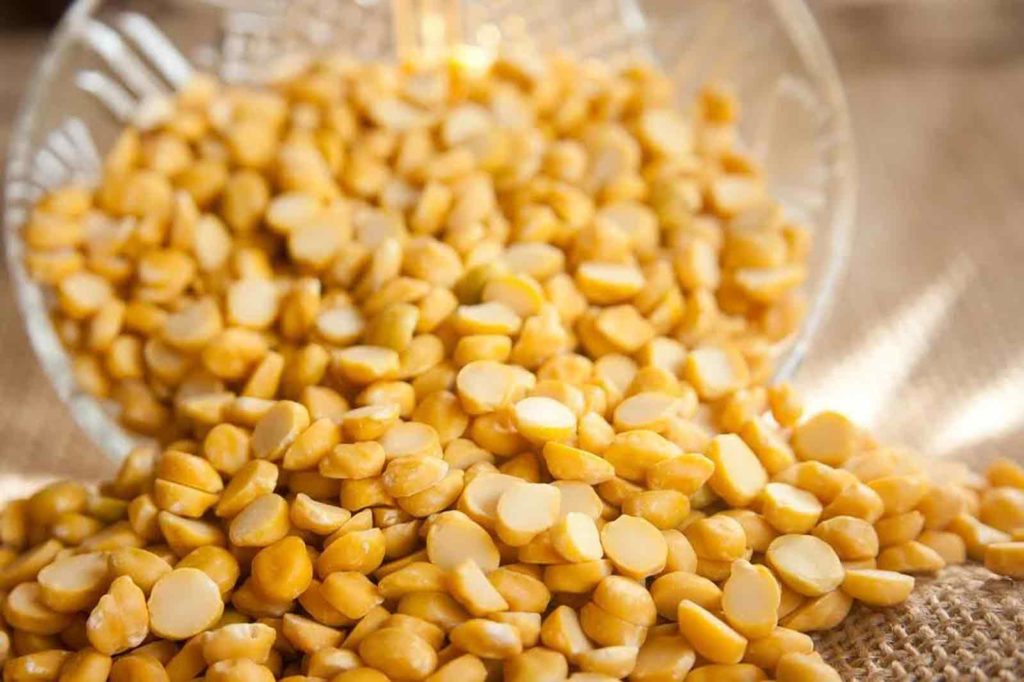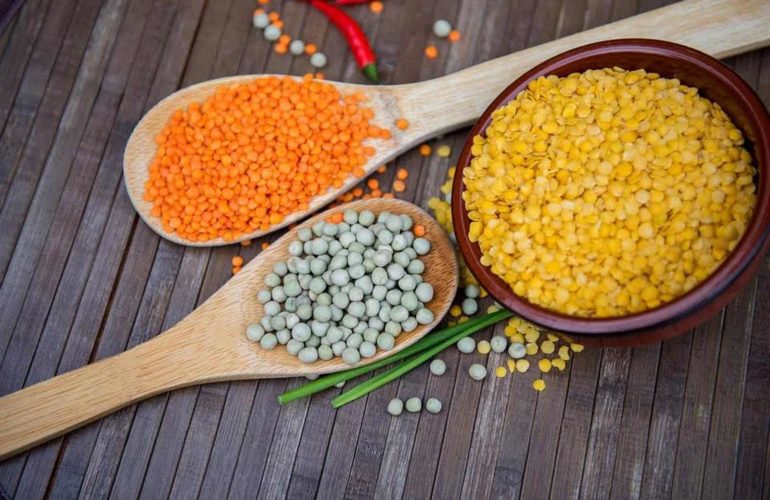Many foods are positioned as the “super foods of the future”, but lentils justify the title the most.
They are the oldest pulse crop known to man and is been cultivated and domesticated for past so many years.
Lentils are one of the most prominently used food items in India. It is packed with the goodness of fiber, protein, iron, zinc, complex carbohydrates, and low fat.
It is the best protein source available in everyone’s kitchen.
Lentils can cater to a variety of diets including vegetarian, allergen-friendly, and gluten-free, aids digestion, and support weight loss. Lentils when eaten with cereals ensure the availability of complete protein, as it supplements all the essential amino acids.
Lentils can be consumed in different ways:
- Whole
- Split with skin on
- Split with the skin off.
WHAT NUTRITION DO LENTILS OFFER?
Though different types of lentils may vary slightly in their nutrient contents, one cup (198 grams approximately) of cooked lentils generally provides about:
✓ 230gm of CALORIES
✓ 39.9gm of CARBOHYDRATES
✓ 17.9gm of PROTEIN
✓ 0.8gm of FAT
✓ 15.6gm of FIBRE
· Out of all plant-based foods, lentils contain the highest content of folate that is a type of B-vitamin, which supports red blood cell formation and proper nerve functions. It is highly recommended to all the women out there to consume folate in their diet.
· Lentils are rich in polyphenols, phytochemicals. Some of the polyphenols in lentils, such as flavanols, are known to have strong antioxidant, anti-inflammatory, and Neuro-protective effects.
· It is a very good source of copper, phosphorus, and manganese.
HEALTH BENEFITS

✓ Supports and promotes heart health.
✓ Prevents folate deficiency during pregnancy.
✓ Fighting fatigue.
✓ Great for digestive health.
✓ Help decrease bad cholesterol.
✓ Helps prevent obesity and supports weight loss.
✓ Good for bone health.
✓ Boosts and strengthens immunity.
✓ Controls blood sugar levels.
✓ Good for skin and hair.
TYPES OF LENTILS / DALS
1. GREEN GRAM DAL/MOONG DAL
My favorite and most consumed dal. You can use it in any of the ways:
✓ Whole for sprouts.
✓ Split with or without skin for normal dal.
Note: It is considered excellent for weight loss.
2. BLACK GRAM/URAD DAL/MAA KI DAL(whole dal)
✓ It is used to make the tastiest and everyone’s favorite dal makhni.
✓ This dal in split form without the skin is mostly used for making dosa and idlis.
3. RED LENTIL/MASOOR DAL
✓ It is very easy to make and is consumed in whole and split without skin form.
4. TOOR DAL/YELLOW PEUGEOT DAL/ARHAR DAL
✓ It is popularly known as “Sambhar dal”, as it is used in the preparation of Sambhar.
5. BENGAL GRAM/CHANNA DAL
Less known but highly nutritious variety of dal/lentils:-
6. HORSE GRAM/KULTHI DAL
It is mostly used in South India, in states of Telangana, Andhra Pradesh, and North-east areas.
It is slightly warm and is best for consumption in summers as well as winters.
It is also claimed to have weight loss properties.
7. MOTH BEAN/MATKI DAL
It is a prominent lentil, especially in Maharashtra.
Nutritional Comparison of Dal: (100 g uncooked whole dal)
| Carbs | Protein | Fiber | Iron | Calcium | |
| 1. Moong Dal | 63g | 24g | 15g | 6.7g | 132mg |
| 2. Urad Dal | 60g | 24.8g | 18g | 7.3mg | 200mg |
| 3. Masoor Dal | 63g | 23.8g | 12g | 9mg | 132mg |
| 4. Toor Dal | 63g | 22.3g | 17g | 4mg | 57mg |
| 5. Chana Dal | 64g | 21.8g | 28g | 4.3mg | 40mg |
| 6. Horse Gram | 57g | 22g | 12g | 7mg | 287mg |
| 7. Moth Dal | 56g | 23.7g | 9g | 9mg | 202mg |
NOTE: Women requires 18 mg of iron per day)
AYURVEDIC PROPERTIES
MOONG DAL
✓ It balances all dosha.
✓ It has cooling properties.
✓ Easy to digest.
TOOR DAL
✓ It may increase Vata.
✓ It also has cooling properties.
✓ Easy to digest.
CHANNA DAL
✓ It may increase Vata.
✓ It also has cooling properties.
✓ Easy to digest.
MASOOR DAL
✓ Whole Masoor dal may increase Vata, but split won’t.
✓ It also has cooling properties.
✓ Easy to digest.
HORSE GRAM
✓ It reduces Kapha and vaat.
✓ It may increase pitta, as it is warm.
✓ Easy to digest.
URAD DAL
✓ It increases both Kapha and pitta.
✓ Heavy to digest.
✓ Warm in nature.
MOTH DAL
✓ Acts as a coolant.
✓ It may increase vaat.
✓ Easy to digest.
OTHER AYURVEDIC SUGGESTIONS
✓ Ayurveda suggests using spices in making lentils that help digestion, such as asafetida (hing), cumin seeds, fresh ginger, and black pepper.
✓ It tells us to avoid bad food combinations such as don’t combine Dals in the same meal with eggs, milk, yogurt, cheese, meat, or fish.
✓ To get FULL PROTEIN in the diet in any 24 – 48 hour period, you will need to have grains (especially whole grains) or nuts and seeds along with consumption of lentils.
✓ Add vitamin C & Sulphur to increase absorption of zinc & Iron present in lentils.
BEST TIME & WAYS TO EAT DAL
✓ You can consume in the morning and snack time in form of sprouts with other veggies.
✓ You can consume lentils in the afternoon with rice or roti.
✓ You can consume lentils at night as soup or stew, khichdi, or Daliya mix.
✓ If you want to consume dal at night make sure you finish your dinner 2-3 hours before bedtime.
Various Dishes made with lentils
Dal, Khichdi, soup, fermented Dal dishes, sprouts, stew, rasam, salads, sweet dishes (moong and channa Dal pudding and halwa)
NOTE:
Lentils contain anti-nutrients including Trypsin Inhibitors, Lectins, Tannins, and Phytic Acid which can affect the absorption of other nutrients.
All dals contain some anti-nutrients; therefore it’s important to note that, soaking (the whole Dal), de-hulling, buying organic dals, and cooking the seeds greatly reduce their presence.
TIME REQUIREMENTS, METHODS & UTENSILS:
1. UTENSILS
Best utensil to cook lentils is Clay pots and steel pans. Also, iron pots should be avoided as they are not highly recommended.
2. METHODS ALONG WITH THEIR TIME REQUIREMENTS
You can cook various forms of lentils within different periods like
- Split dal without skin requires 20min
- Split dal with skin requires 30 min.
- Whole lentils require 60 minutes.
- Chana dal requires 60-80min.
Don’t neglect consuming roots of the Indian diet, these super-nutritious lentils are easily accessible, economically feasible, and require negligible efforts and time in their making, and yet fills you with a high amount of various essential nutrients required by your body.
